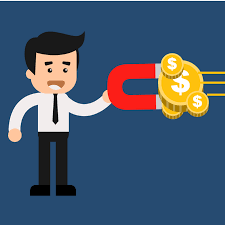How Meesho became Unicorn Company - Its Valued 2.1Billion USD
December 7, 2025
January 5, 2026,11:28:55 PM

You might think once you categorize incomes and expenses, everything is ok. But is that so? Creating a budget plan is not simply the classification of your expenses and your income. There are a few more pointers that you need to know. Are you curious to see what else is left? Think about it. If you still are clueless in the next few steps, you will see how it is done.
![]()
Netting the Income and expenses
The next step that you need to do is netting your income and expenses. Once you have calculated your total monthly income and expenses, you have to find out the net amount with you. How will you do it? Deduct your expenses from income. Your remaining money could be used both for savings and spending. It is the part of your budget where you should give enough priority to liquidity.
Negative Net Income
Suppose you are a beginner. You got your job recently, and do not have enough salary. In such cases, your expenses will be far higher than your income. It is also not uncommon to see newbies landing in debts. The same is true of entrepreneurs too. When they start a business, the earning potential is at the nascent stage and they have to be careful with the money they have. In such cases, it is advisable to check your spending patterns. Having a realistic tracker for that will help a lot.
If you are having a negative net income after deducting your month’s expenses, what will you do? It will be wise to reduce expenses in such scenarios. How will you do that? Take the list of expenses and find out which are not that necessary and strike them off. It might be a little difficult to live outside the comfort zone for a while. But remember, this is necessary for the long-term benefit. Also, try to save whatever you can and do not spend unless it is necessary.
![]()
Positive Net Income
If you have a positive net income, then you should be happy. It shows sound financial health. You might go through a lot of difficulties to reach this level. But once you reach here, there is no looking back. It is an indication that it is time now for investing. Some might think at this point, “we have endured a lot to reach here and now you are saying, don’t spend.” Well, it is quite not so. Where you need to spend, you should; but not at the liberty of debts.
Sometimes, we end up buying a lot of things, that we do not need at all. It is that trend that we need to stop. You always wanted that expensive iPhone or Macbook. Have you ever thought is it necessary? If it is, then do buy. There is a huge difference between buying for need and buying for showing off. The less you show off, the better will be your finances as trends always change. If Apple released a new version of the iPhone immediately after your purchase, will you dump your new phone and run after the latest version? That is where you need the reality check.
![]()
50-30-20 Rule
This formula helps you to successfully execute your budget plan. It is not for those people with negative net income. This philosophy shows 50% of your income should be kept for essential expenses. Your spending should be 30% and the last 20% of your savings and debt repayment. Savings should be channelized to investment opportunities depending upon your long, mid, and short-term financial goals. Before deciding on investments, liquidity is one of the most important factors that should be taken care of.
Conclusion
The budgeting process is still not over. We have one more important area to cover. But the point is, reading these plans and strategies will not be fruitful unless you implement them with strict discipline. Your life is in your control. But the decisions that you make today might have a huge impact on your family later. To make the people around you happy, to surround life with positivity, and lead a healthy life is far important than extravagant spending. Stay tuned for the last part of budgeting soon. Till then, stay healthy, stay wise.
© 2024 Iconsofindianbusiness.com. All Right Reserved.